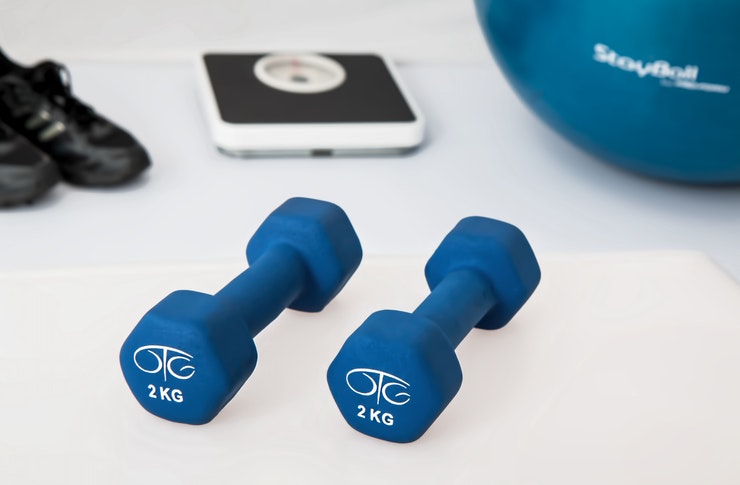Chrono-Fitness: Timing Your Workouts for Peak Performance
In the ever-evolving world of fitness, a groundbreaking approach is emerging that promises to revolutionize how we exercise. Chrono-fitness, the practice of strategically timing workouts based on our body's natural circadian rhythms, is gaining traction among athletes, fitness enthusiasts, and researchers alike. This innovative concept goes beyond traditional workout routines, tapping into the body's internal clock to maximize performance, recovery, and overall health benefits. As we delve into the science behind chrono-fitness, we'll explore how this approach is reshaping our understanding of exercise efficiency and opening new doors for personalized fitness regimens.

For instance, core body temperature tends to peak in the late afternoon, coinciding with increased muscle strength and flexibility. This makes it an ideal time for high-intensity workouts or strength training. Conversely, early morning exercises may be more beneficial for fat burning, as the body’s cortisol levels are naturally higher upon waking, promoting the breakdown of fat stores for energy.
Optimizing Workout Timing for Different Fitness Goals
Chrono-fitness advocates for tailoring workout schedules to individual fitness objectives. For those aiming to build muscle mass, late afternoon or early evening sessions may yield better results. During this time, testosterone levels are higher, and the body’s ability to synthesize proteins is enhanced, facilitating muscle growth and repair.
Endurance athletes might find their sweet spot in the early to mid-morning hours. As the body temperature rises throughout the day, lung function improves, potentially boosting cardiovascular performance. Additionally, morning workouts can help establish a consistent routine and may lead to better adherence to exercise programs.
For weight loss enthusiasts, early morning workouts on an empty stomach could be advantageous. This approach, often referred to as fasted cardio, may increase fat oxidation. However, it’s crucial to note that individual responses can vary, and some people may perform better with a light pre-workout meal.
Chrono-Fitness and Sleep Quality
One of the most intriguing aspects of chrono-fitness is its potential impact on sleep quality. Evening workouts, particularly high-intensity sessions, have long been discouraged due to concerns about disrupting sleep patterns. However, recent research suggests that the relationship between exercise timing and sleep is more nuanced.
Moderate-intensity workouts performed in the evening may actually improve sleep quality for some individuals. The post-exercise drop in body temperature can promote sleepiness, potentially leading to faster sleep onset. However, intense workouts close to bedtime may still interfere with sleep for some people, highlighting the importance of individual experimentation and adjustment.
Hormonal Considerations in Chrono-Fitness
Hormones play a pivotal role in the chrono-fitness paradigm. Cortisol, often dubbed the “stress hormone,” follows a distinct daily pattern, peaking in the morning and gradually declining throughout the day. This rhythm can influence exercise performance and recovery.
Morning workouts, when cortisol is naturally high, may lead to greater fat burning and improved alertness. However, some individuals might find high-intensity morning workouts overly stressful, as they could further elevate cortisol levels.
Growth hormone, crucial for muscle repair and growth, is primarily released during sleep. This has led some chrono-fitness proponents to advocate for strength training in the evening, potentially maximizing the body’s natural anabolic state during rest.
Implementing Chrono-Fitness in Daily Life
Adopting a chrono-fitness approach requires careful consideration of individual schedules, preferences, and physiological responses. While scientific evidence provides general guidelines, personal experimentation is key to finding the optimal workout timing.
Start by tracking your energy levels, mood, and performance at different times of the day. This self-awareness can help identify your body’s natural peaks and troughs. Gradually adjust your workout schedule to align with these patterns, paying attention to how your body responds.
It’s also important to consider practical factors such as work schedules, family commitments, and personal preferences. The most effective workout timing is one that you can consistently maintain. Remember that consistency often trumps perfect timing when it comes to long-term fitness success.
As the field of chrono-fitness continues to evolve, it offers exciting possibilities for optimizing our exercise routines. By aligning our workouts with our body’s natural rhythms, we may unlock new levels of performance, recovery, and overall well-being. While more research is needed to fully understand the intricacies of timing and exercise, the chrono-fitness approach provides a fascinating new perspective on how we can work with our bodies to achieve our fitness goals. As we move forward, this innovative concept may well become a cornerstone of personalized fitness planning, helping individuals maximize the benefits of their exercise efforts in harmony with their unique biological clocks.




